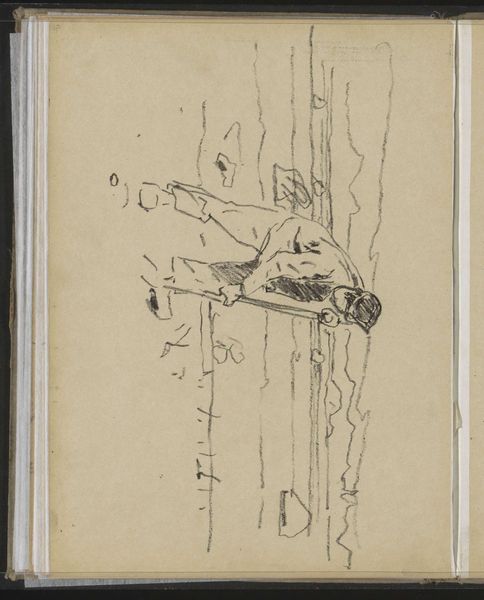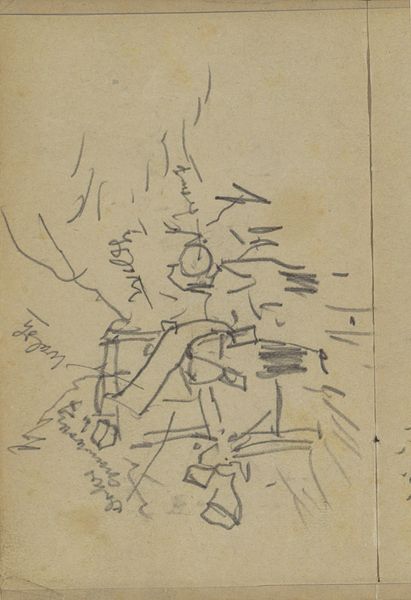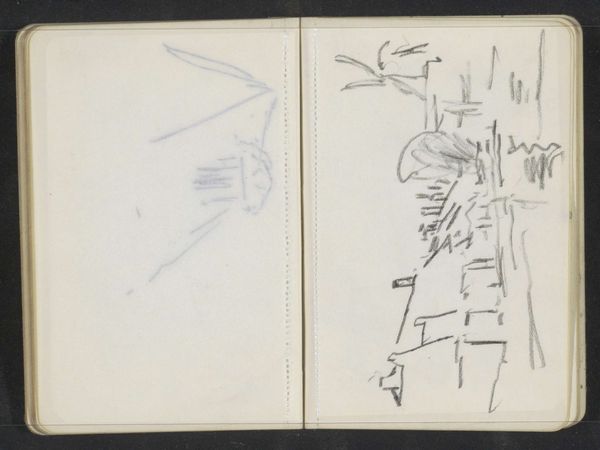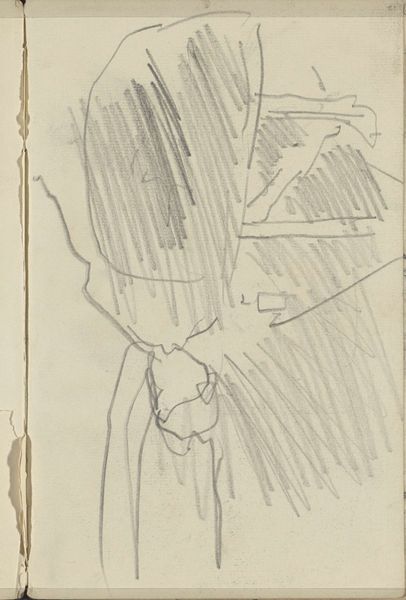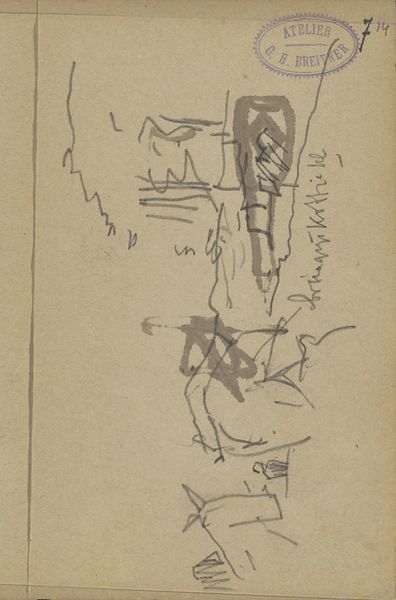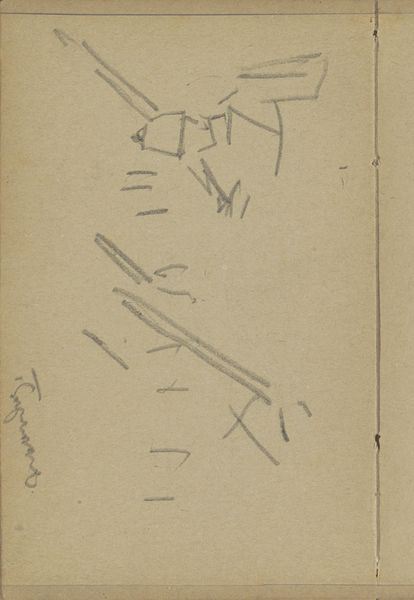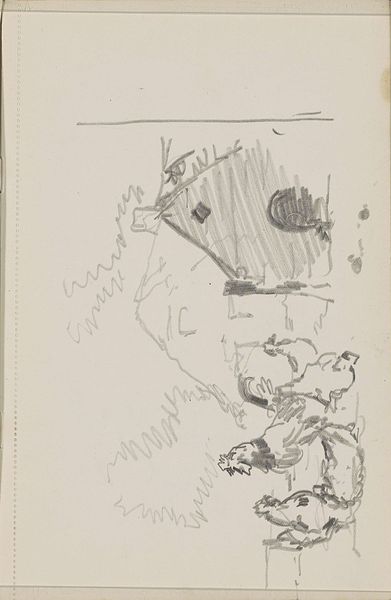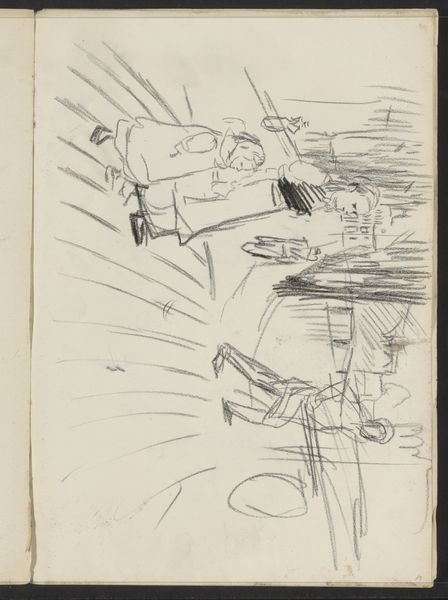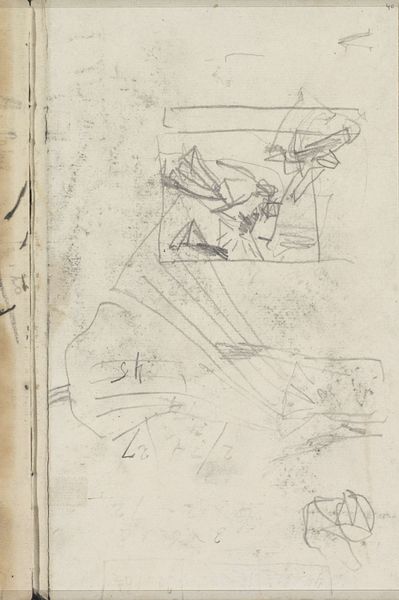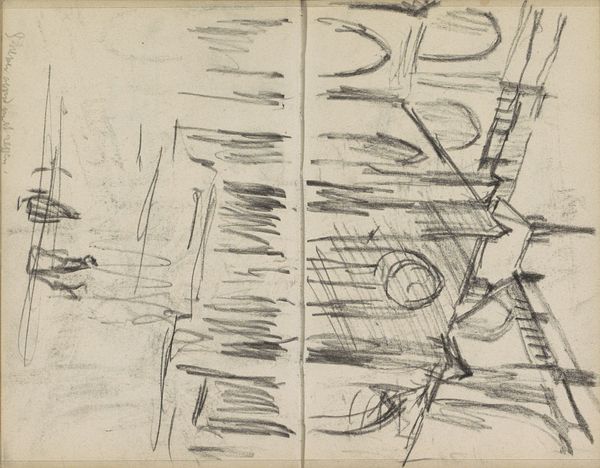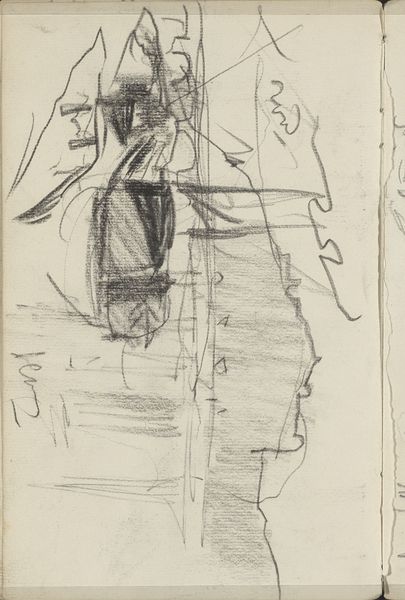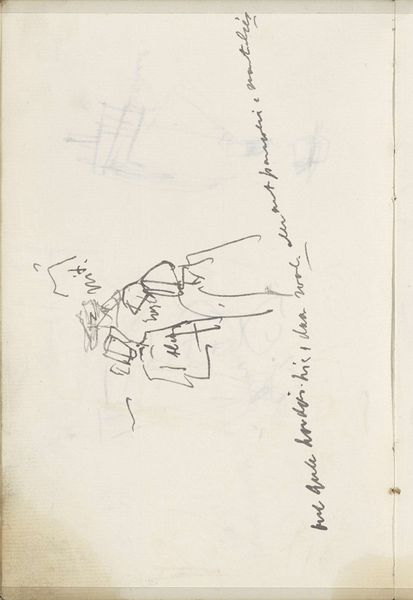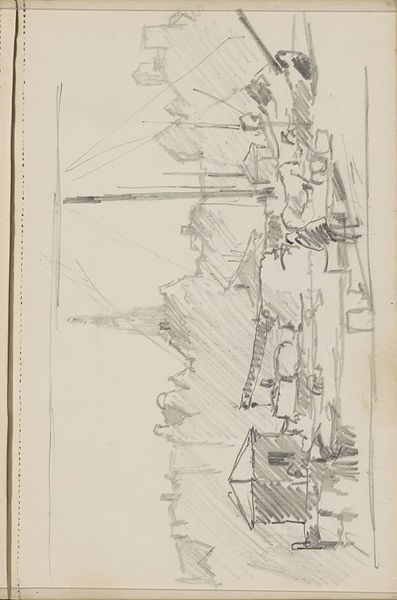
Briefkaart aan Jan Ponstijn en Henriëtte Johanna Petronella van Hilten before 1919
0:00
0:00
drawing, paper, ink
#
portrait
#
drawing
#
comic strip sketch
#
quirky sketch
#
narrative-art
#
sketch book
#
figuration
#
paper
#
personal sketchbook
#
ink
#
sketchwork
#
expressionism
#
thin linework
#
line
#
sketchbook drawing
#
storyboard and sketchbook work
#
sketchbook art
#
initial sketch
Dimensions: height 90 mm, width 139 mm
Copyright: Rijks Museum: Open Domain
Curator: So, this is "Briefkaart aan Jan Ponstijn en Henriëtte Johanna Petronella van Hilten," a drawing in ink on paper by Leo Gestel, dating from before 1919, found in the Rijksmuseum. It has a definite… energetic feeling, doesn't it? With all the angled lines and the almost frantic scribbling. What jumps out at you? Editor: The figure seems to be struggling, perhaps against the elements? Or maybe against some internal force, judging from those turbulent lines in the background. It seems simple at first glance, but is that accurate? How do you interpret this work? Curator: I think that tension you're sensing is key. This was created before 1919, during a period of intense social upheaval and shifting artistic paradigms. Look at the figure – burdened, almost weighed down, carrying these heavy, undefined shapes. In this context, consider if the burden represents not just physical weight, but the weight of tradition, societal expectation, or perhaps the trauma of the First World War. What is being carried might not only refer to modern angst and anxiety of urban life but could also connect to debates around masculinity and labour in that specific moment of historical transformation. Do you see a dialogue emerging between personal struggle and collective unease? Editor: I didn’t think about connecting it to that specific post-war time, I was too focused on the pure visual representation. But that context gives the drawing so much more depth. Are those “weights” representations of gendered expectations for instance? Curator: Precisely! Expressionism, particularly as practiced by artists like Gestel, often used distortion and exaggerated emotion to critique the dominant social order and question established norms. In the historical period just prior to the full enfranchisement of women in The Netherlands, does the visible figure's burden speak to the ways society and individuals bore literal or conceptual baggage? What is clear is Gestel’s subversion and resistance to established traditions. Editor: This makes me see the artwork so differently. I went from thinking this was a fairly simple drawing, to now seeing how it is a poignant commentary on a changing society and personal conflict. Curator: Exactly. It’s in this way that we can begin to engage with a dialogue of intersectional cultural meaning and resistance.
Comments
No comments
Be the first to comment and join the conversation on the ultimate creative platform.
